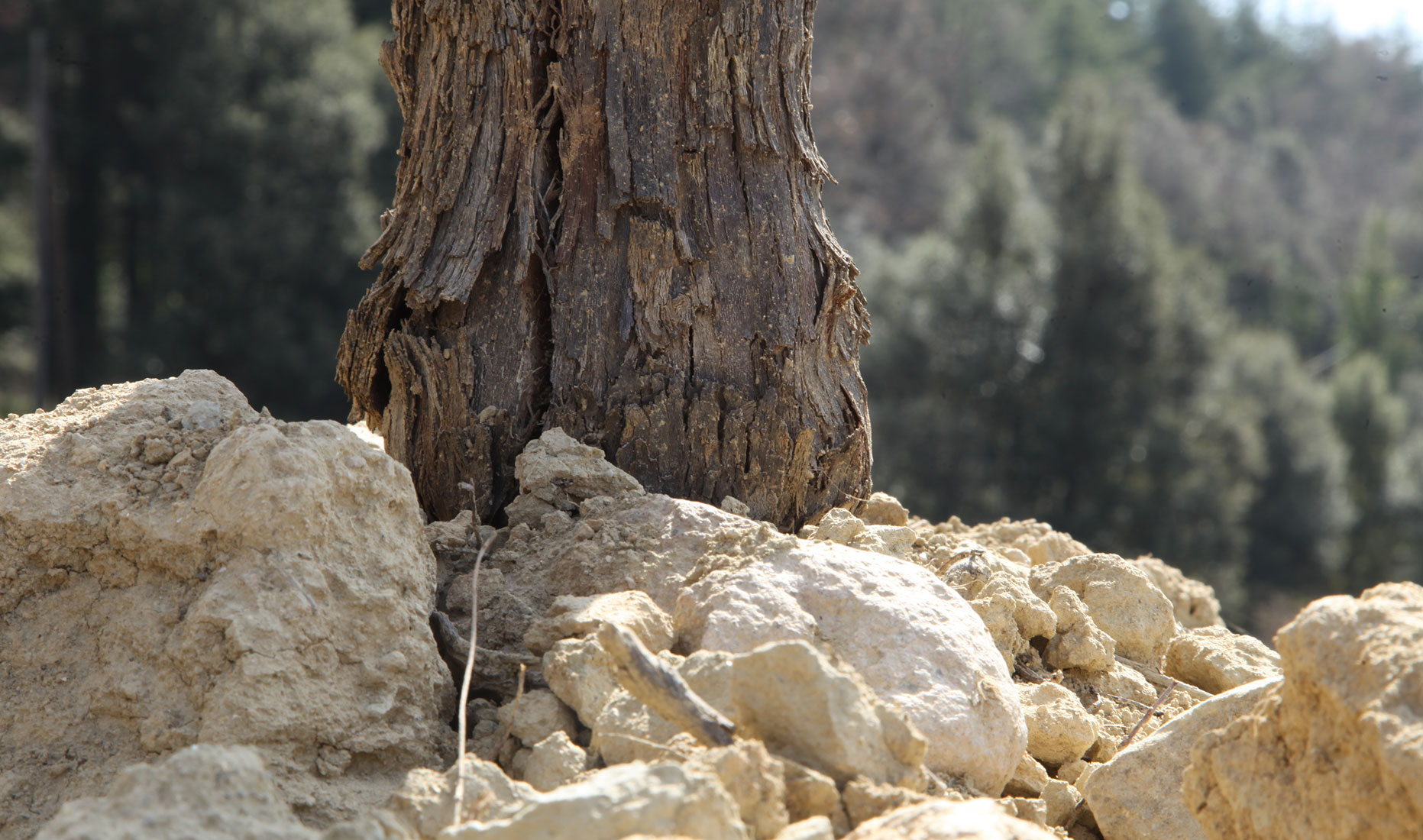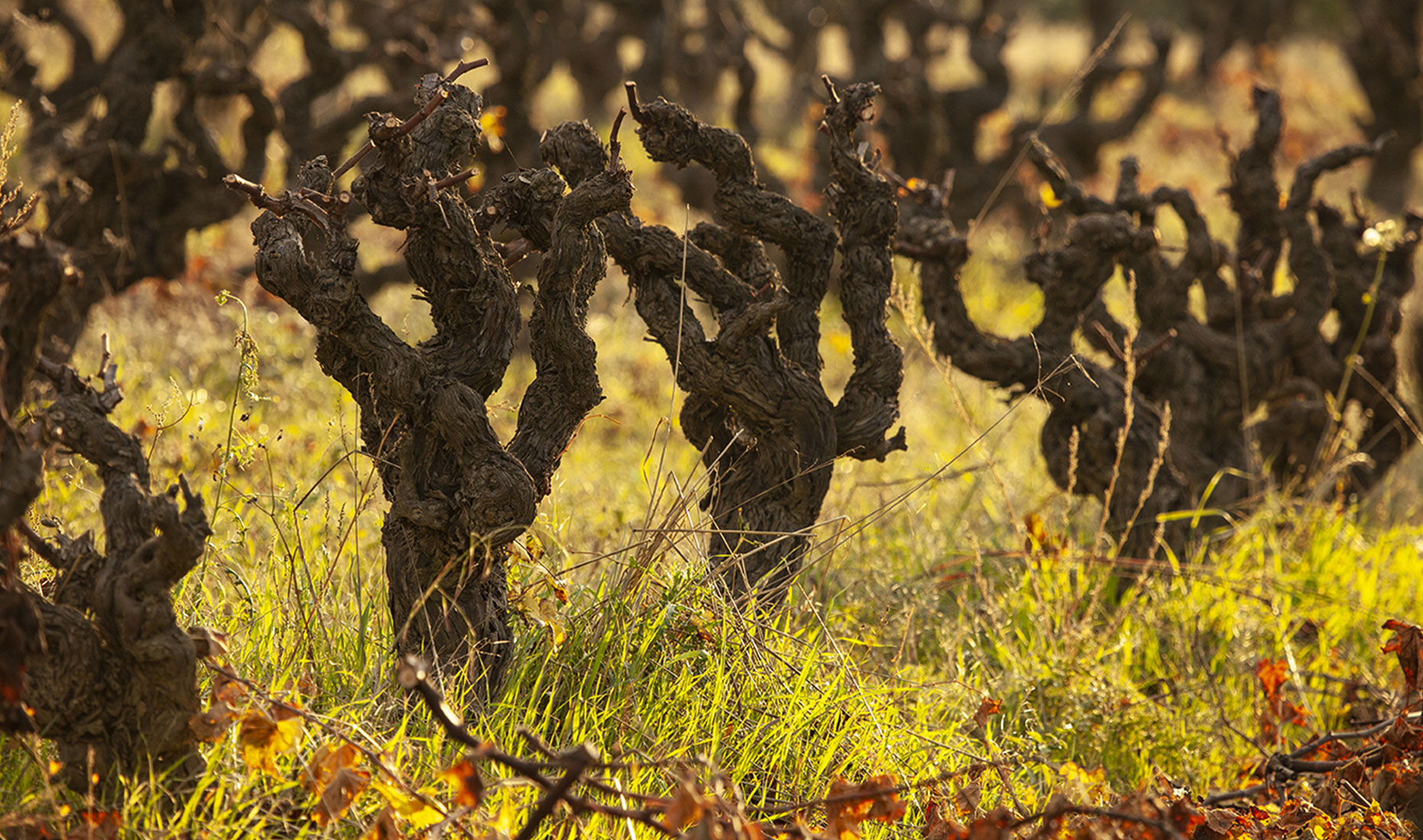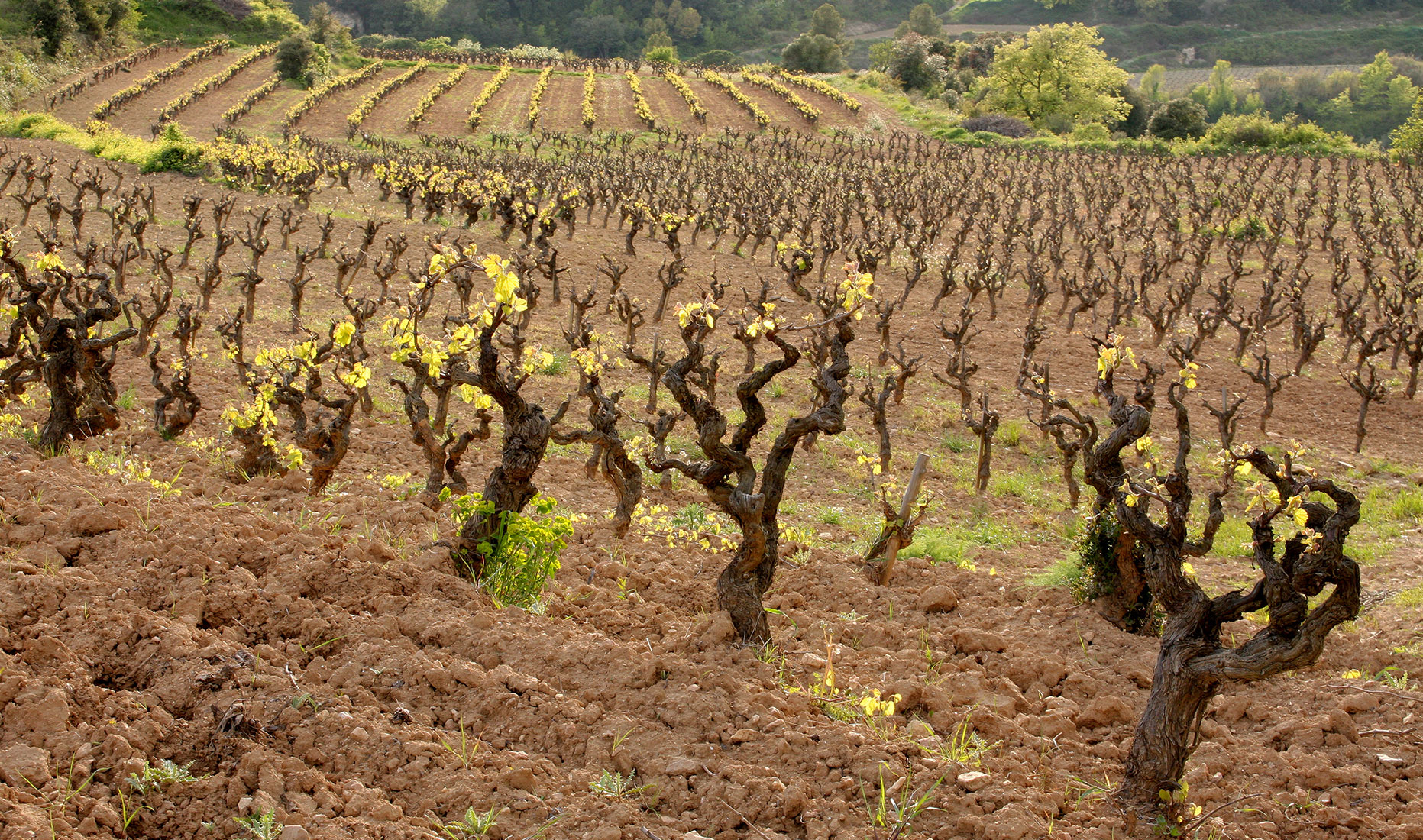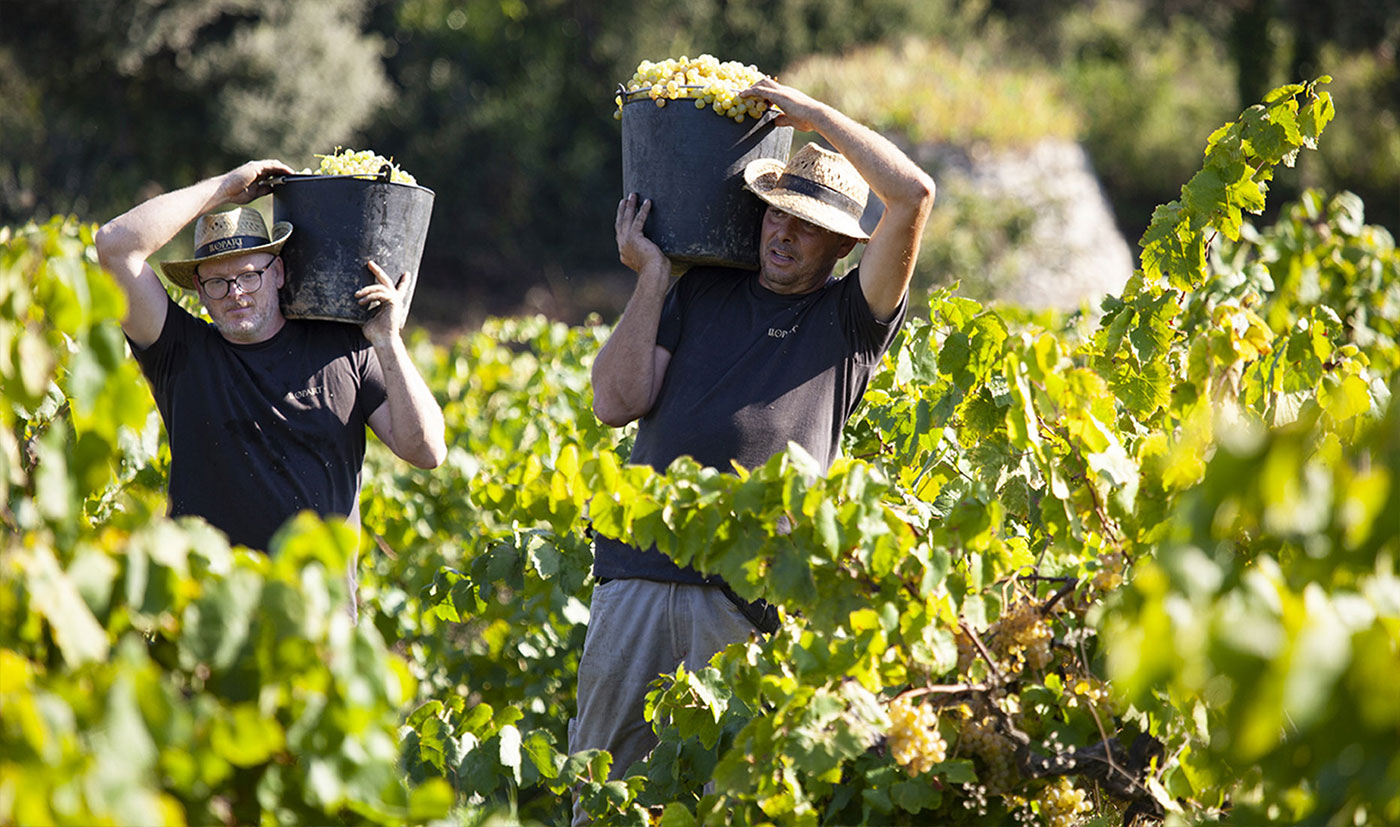
Les Flandes
The unique Les Flandes vineyards are located on the Llopart Family Estate, in Subirats. It is part of the terroir named Clos dels Costers, one of the four areas into which we divide our estate, situated at the western end of the Ordal Mountains. It is located at an altitude of 380 meters. Geologically speaking, it belongs to the foothills of the Garraf massif, with subsoil characterized by the emergence on the surface of sedimentary materials from the Miocene Era (16 to 20 million years old) and carbonate rocks from the Cretaceous Period (100 to 145 million years old). Due to the primitive sea inlet that expanded and retreated several times, we find layers of marine fossils, coral reefs, and sediment strata from old cliffs, rivers, deltas and small lagoons.
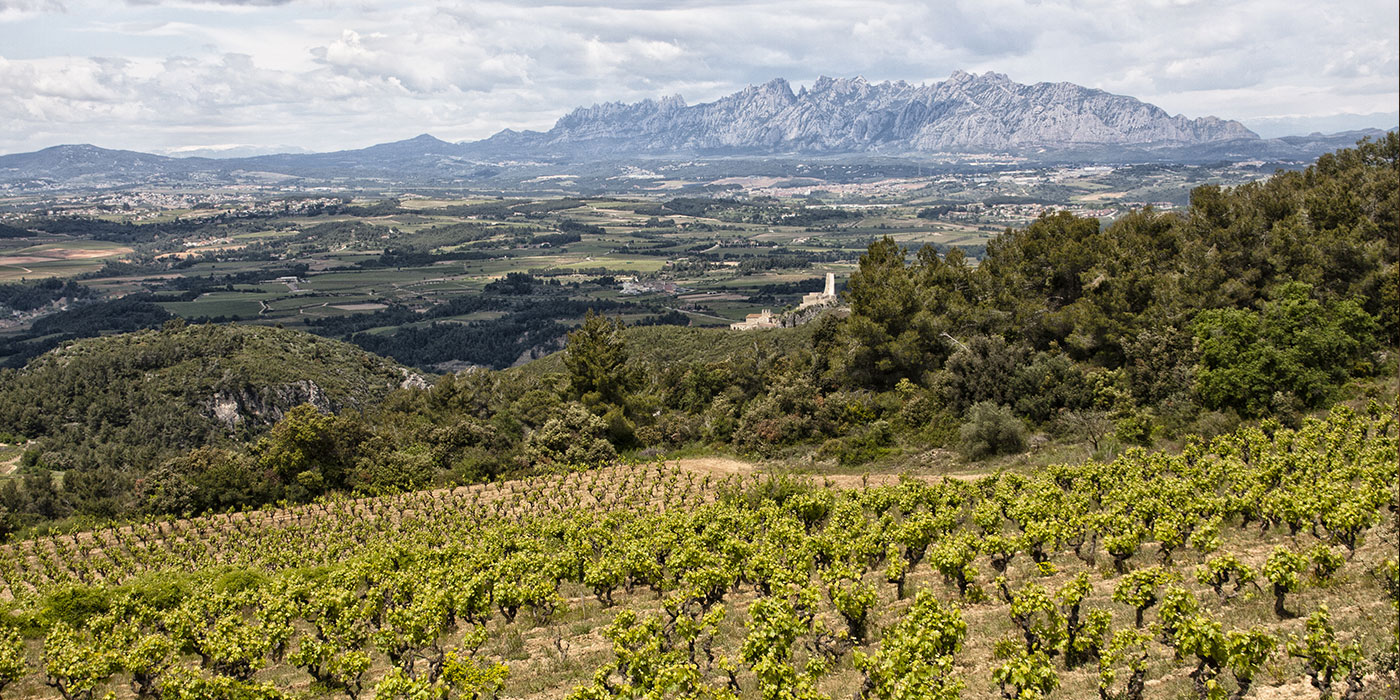
The setting is surrounded by a vast green lung of wild bushes and Mediterranean forest. It is declared and protected as an Area of Natural Interest. It forms a rich mosaic of flora and fauna, with a wide array of medicinal plants, a notable presence of forest vertebrates (squirrel, badger, wild boar, hare, shrew, robin, Bonelli’s eagle, tawny owls, bats, lizards…) and large communities of invertebrates.
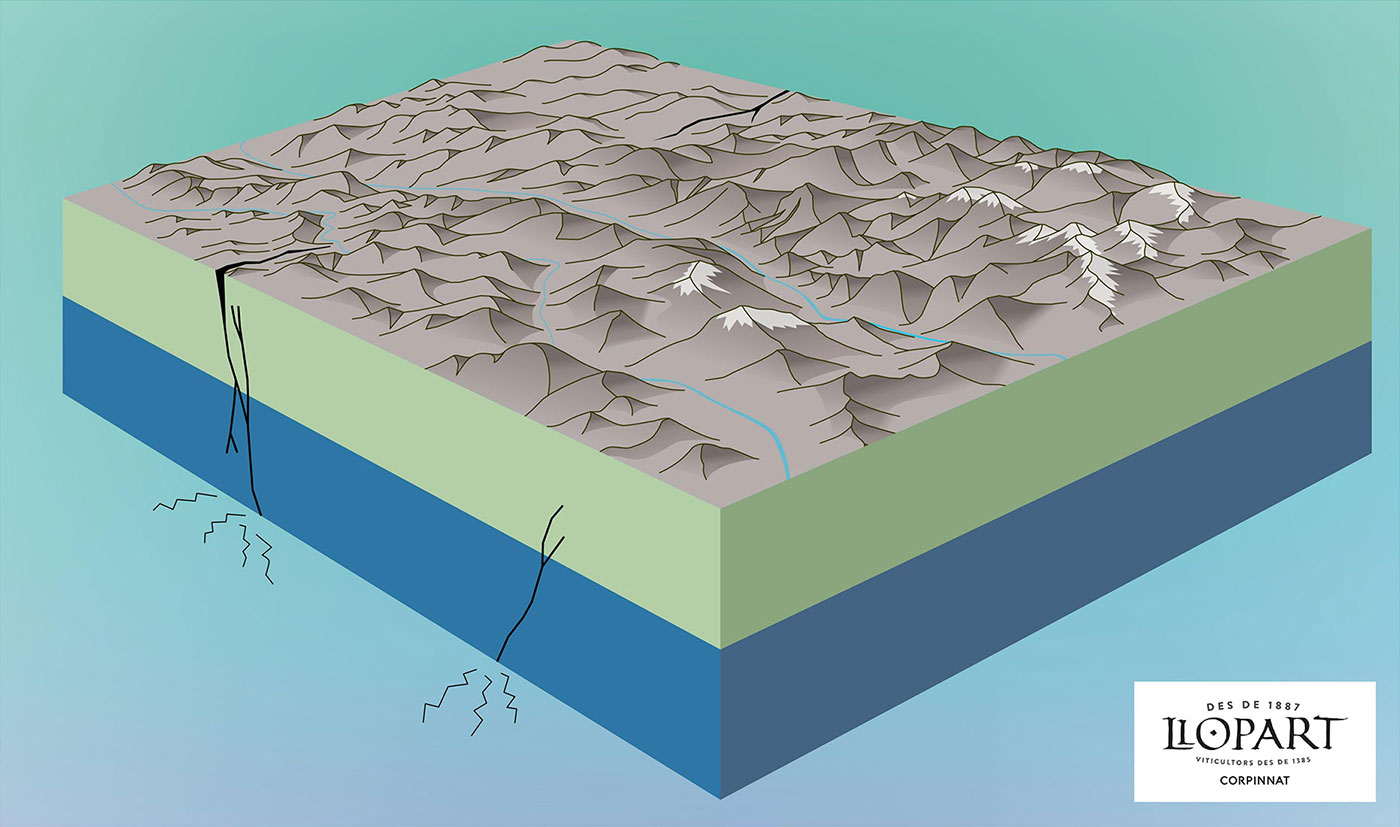
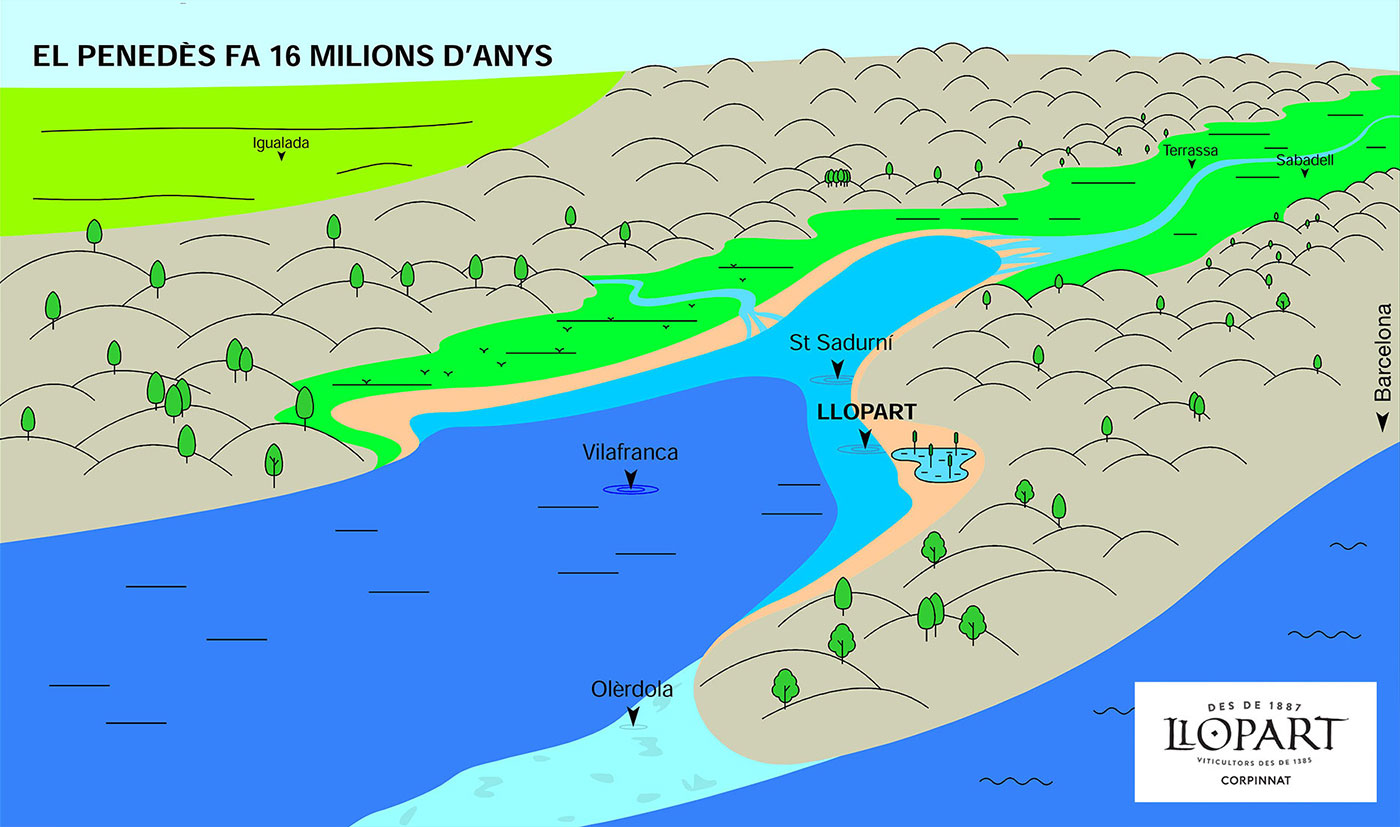
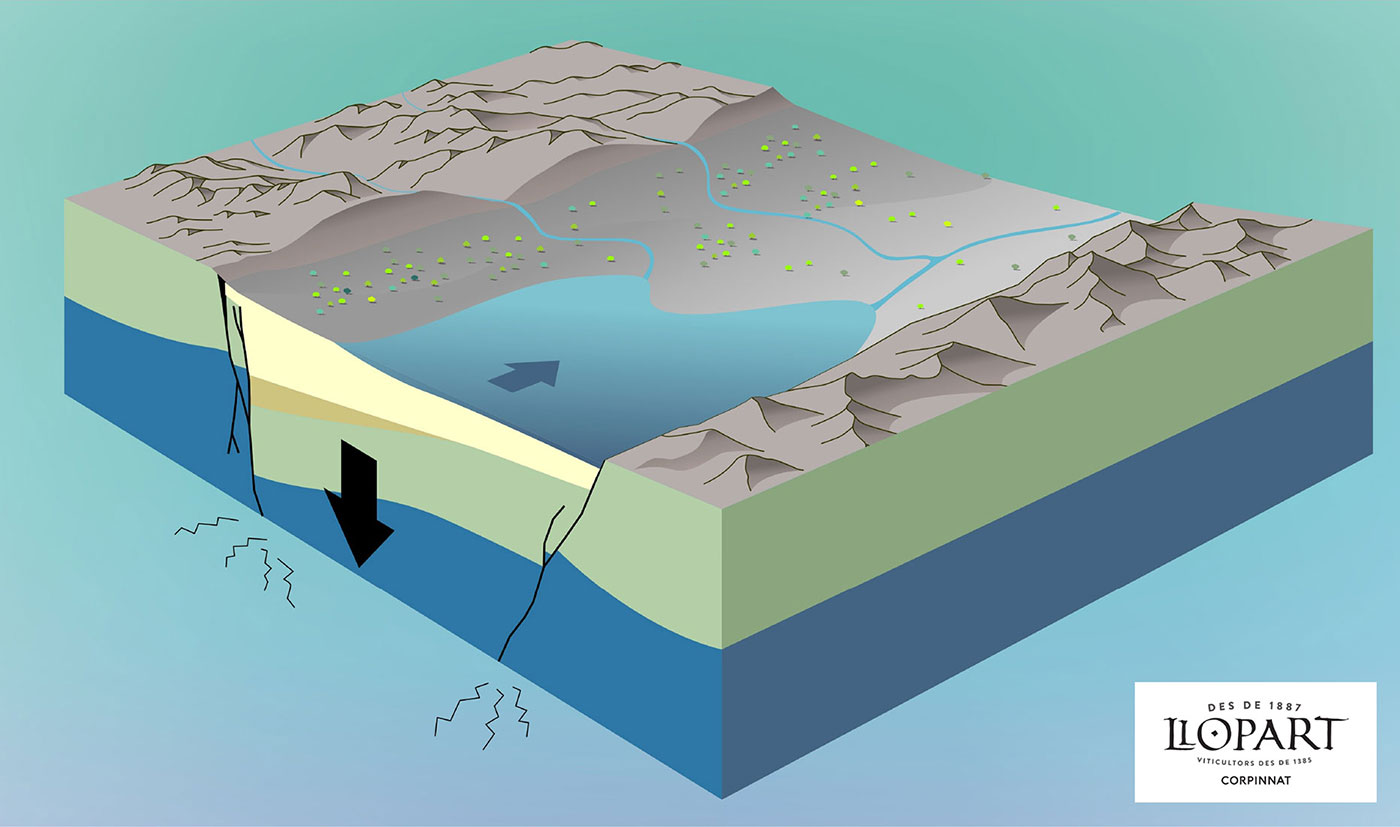
Les Flandes is a space made up of an amphitheater of vineyards, elevated on a vertical wall of limestone rock over 12 meters high and that dates from the Miocene age (20 million years old). Due to the pluvial filtrations, a landslide has occurred, allowing access to the subsoil of the vineyards growing above and offering a glimpse of its unique roots.
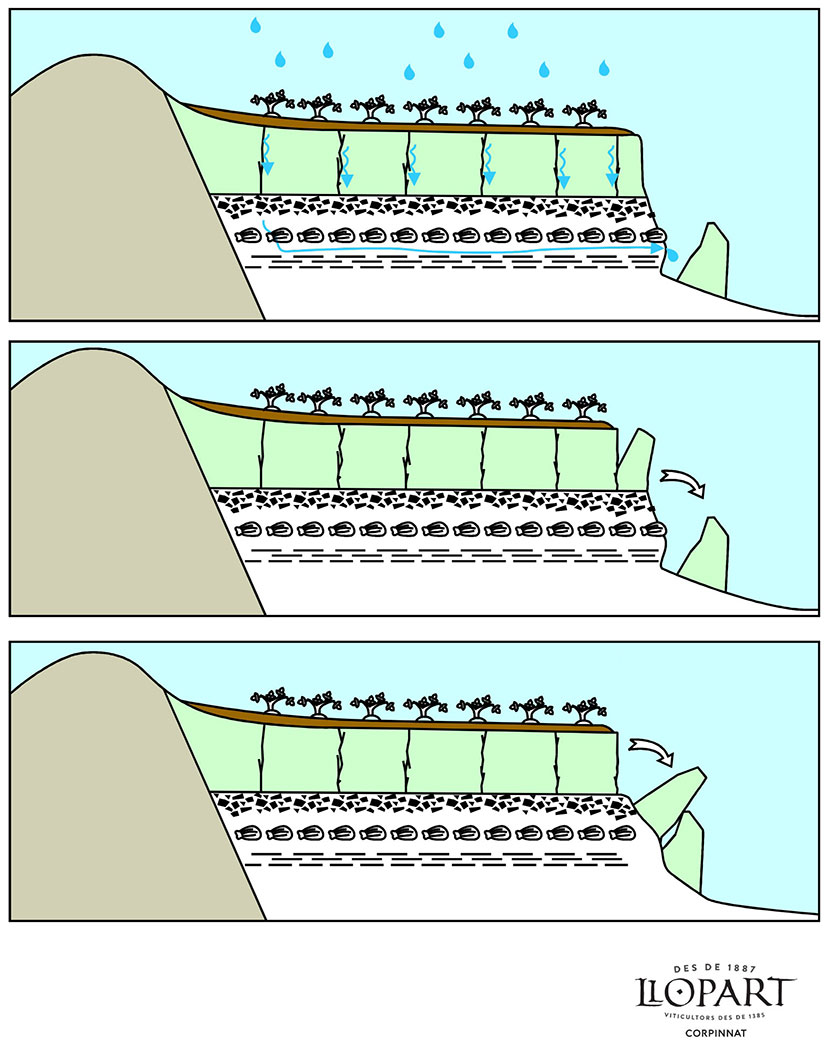
The soil is moderately deep, with very basic pH and very well developed. Its texture is medium to fine, it has good mineral balance,and it contains carbonates in medium layers. Its organic matter content is low. It presents numerous cavities and galleries in the first 65 centimeters due to the high activity of the local fauna.
The sloping terraces prevent the accumulation of rainwater, encouraging the vine to develop a deep rooting system in the search for water, taking advantage of the cracks found in the limestone. This fact allows the vines to maintain a very constant and steady production and quality, even in very dry years.
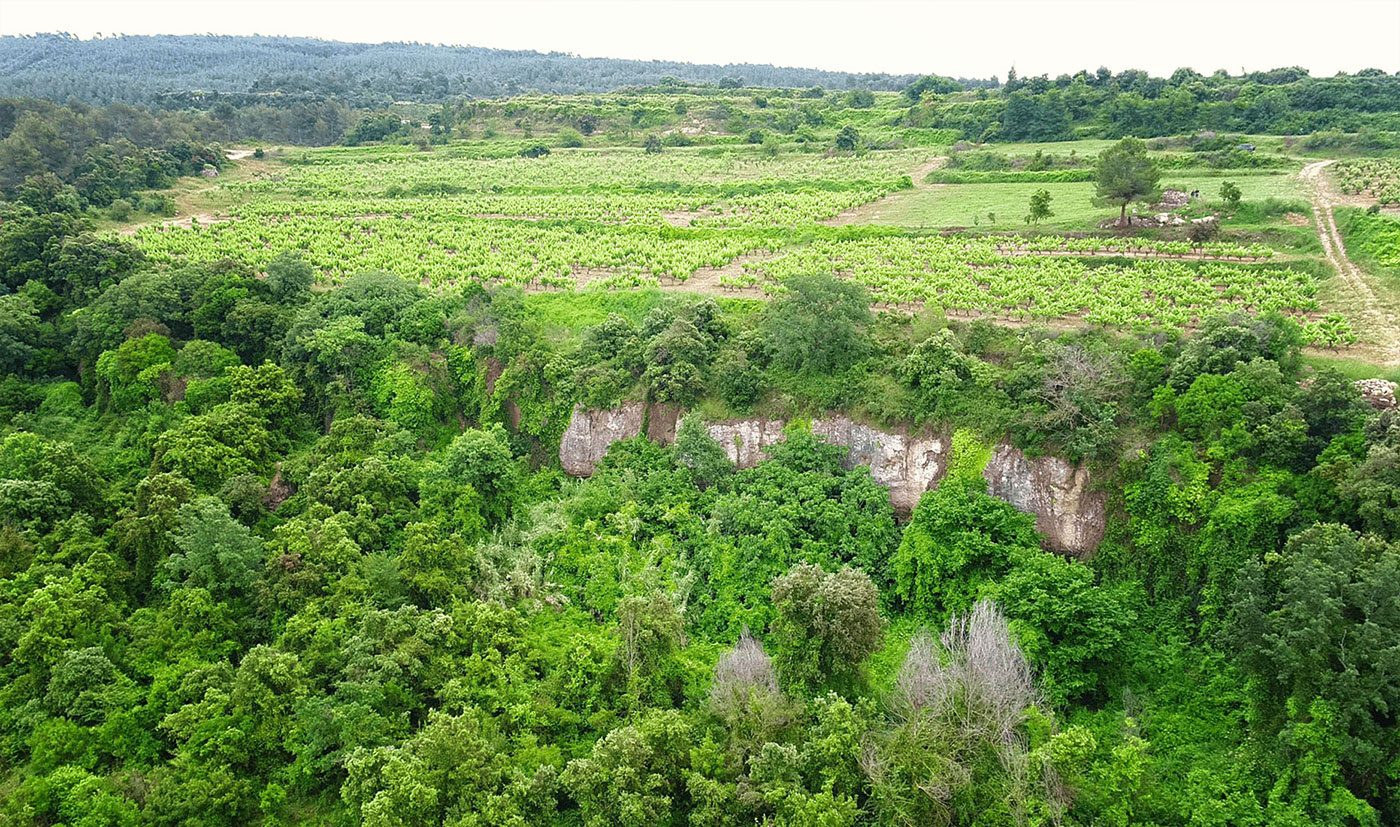
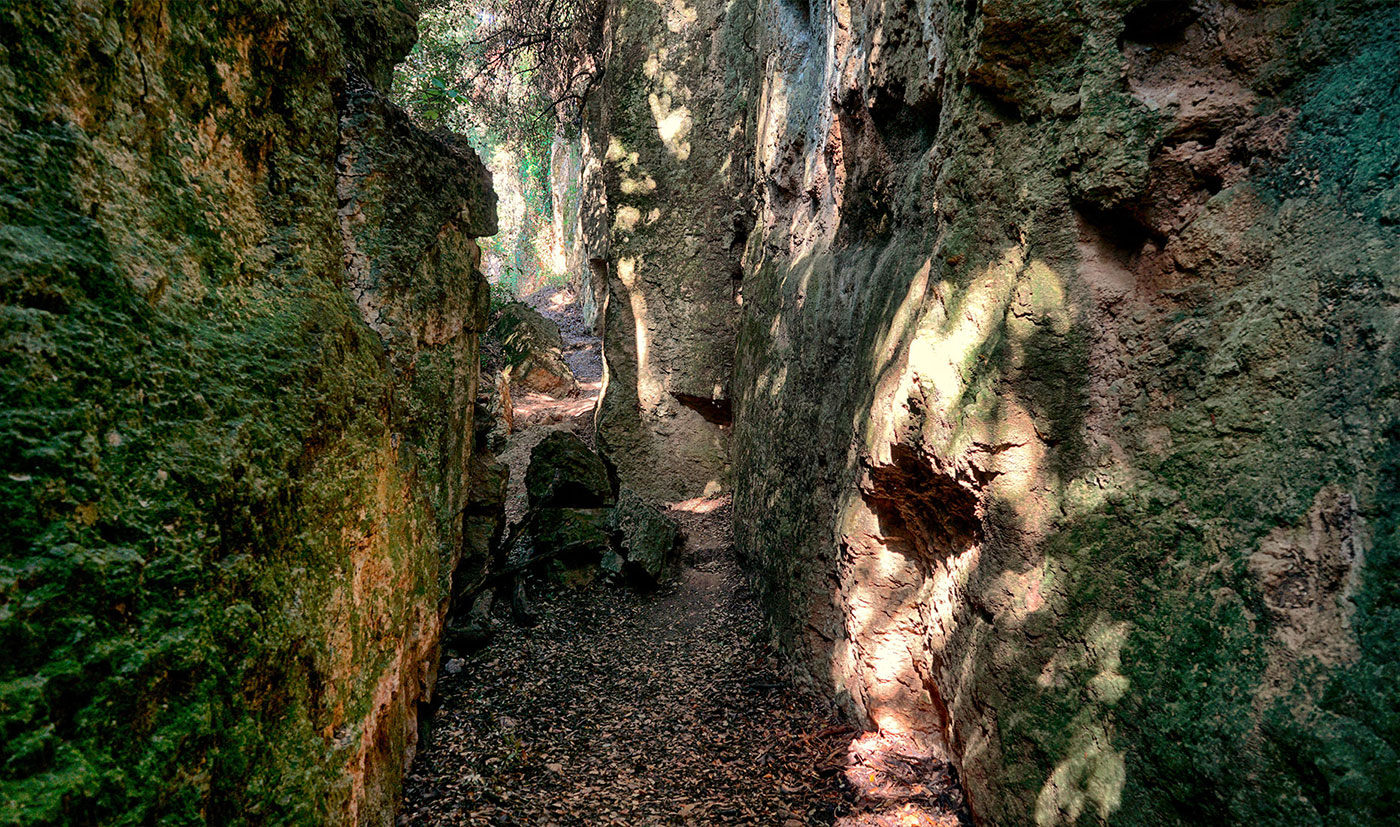
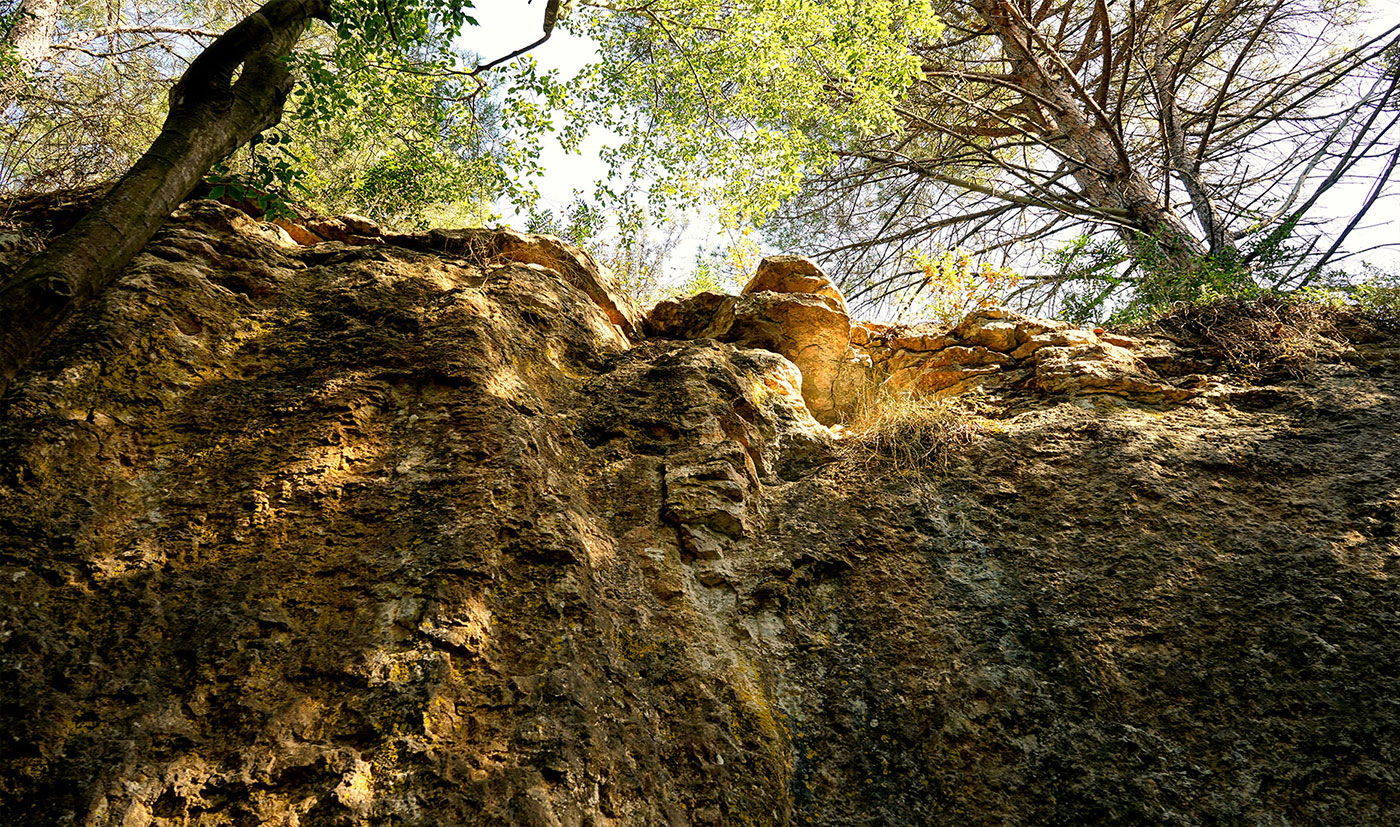
The vineyards are north-facing, the shaded side of the mountain and therefore they obtain a limited exposure to the sun. The altitude of Les Flandes, along with the fresh winds coming from the North, create a very significant contrast between day and nighttime temperatures that favors a slow ripening of the grapes. These special conditions create grapes with outstanding aromatic expression, complete phenolic development and perfect levels of acidity; all essential for long aging wines.
The Llebeig wind, a south-western wind coming from the coast, arrives as a fresh sea breeze in on summer afternoons. This humid wind brings two benefits: it provides a water input in the hottest and driest days due to the night condensation phenomenon and it regulates the temperatures through morning evaporation.
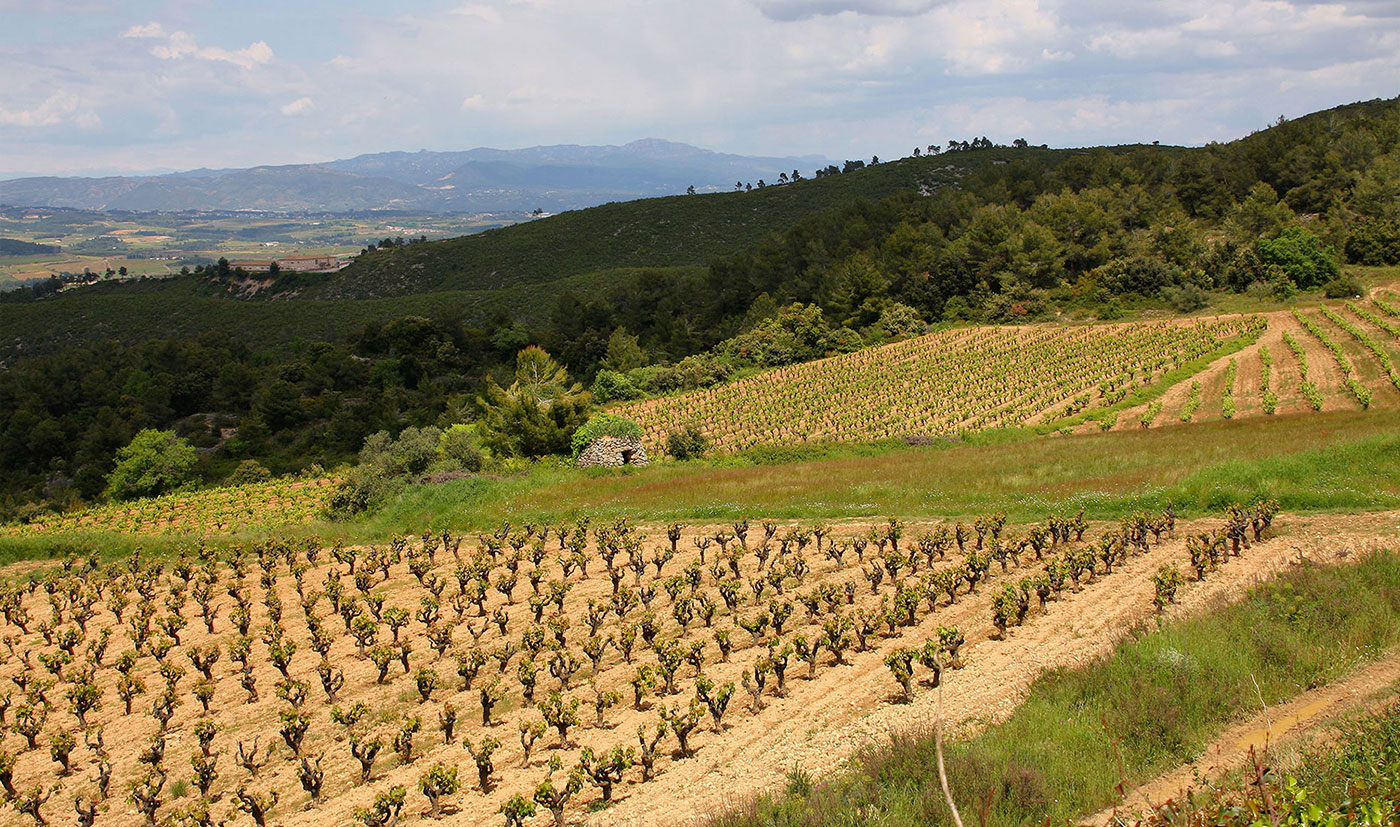
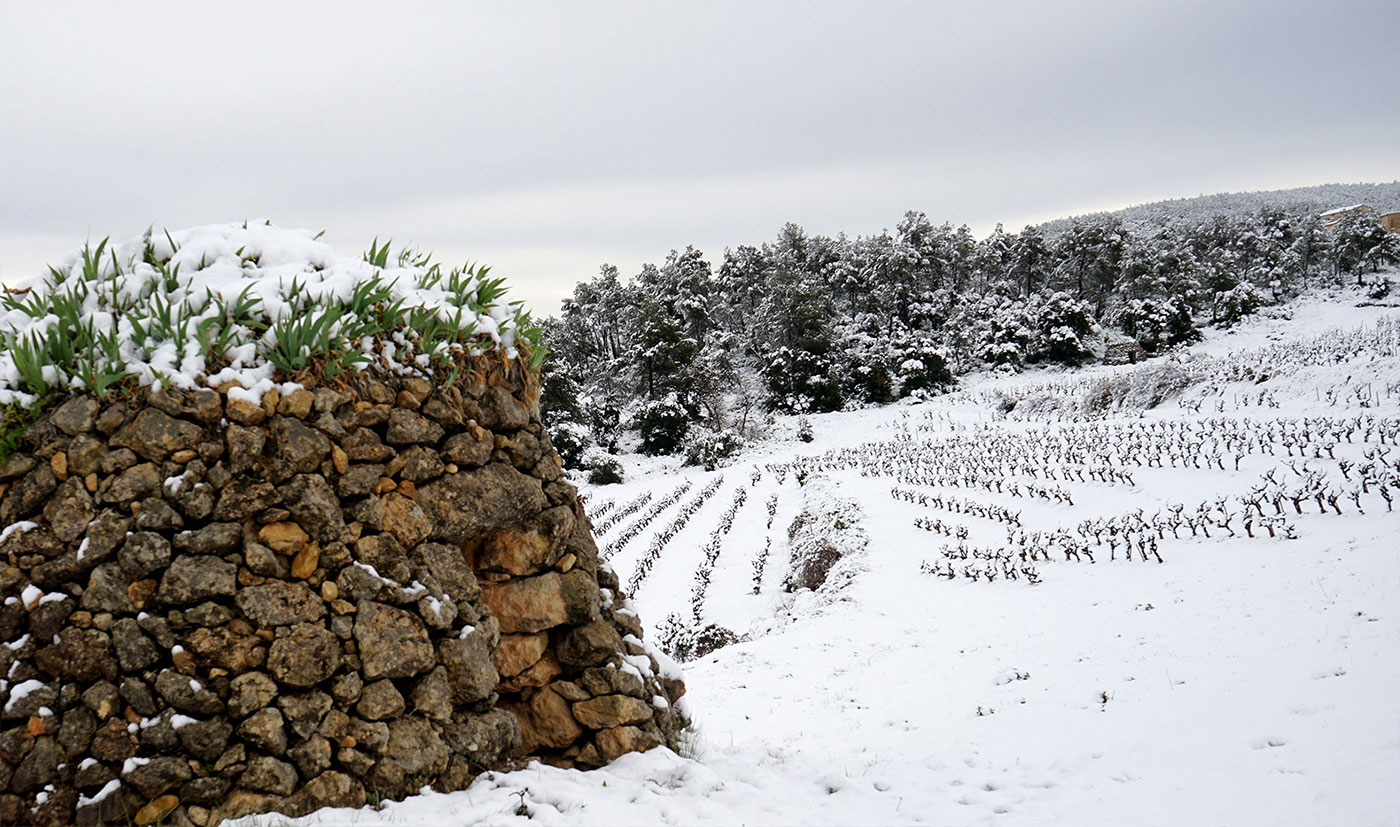
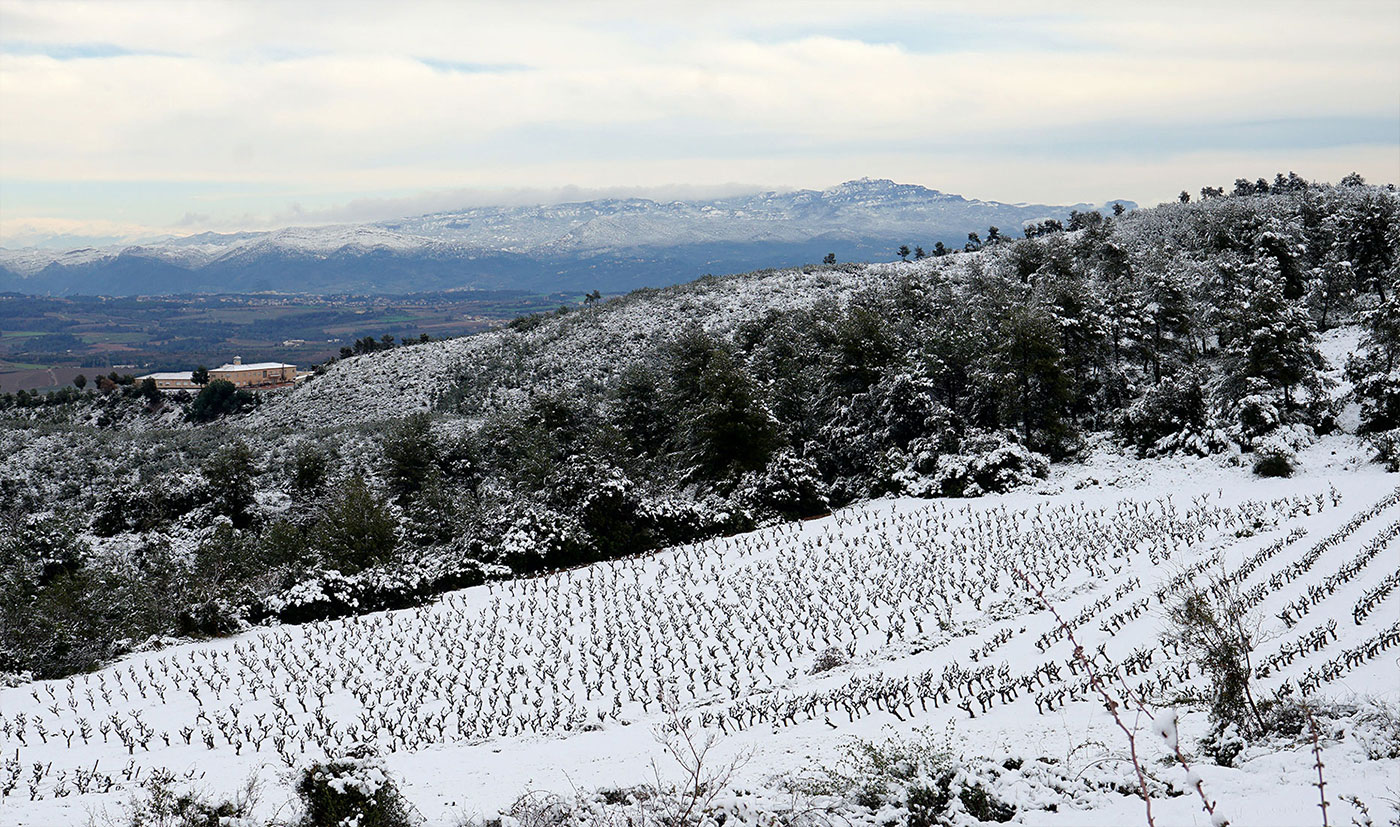
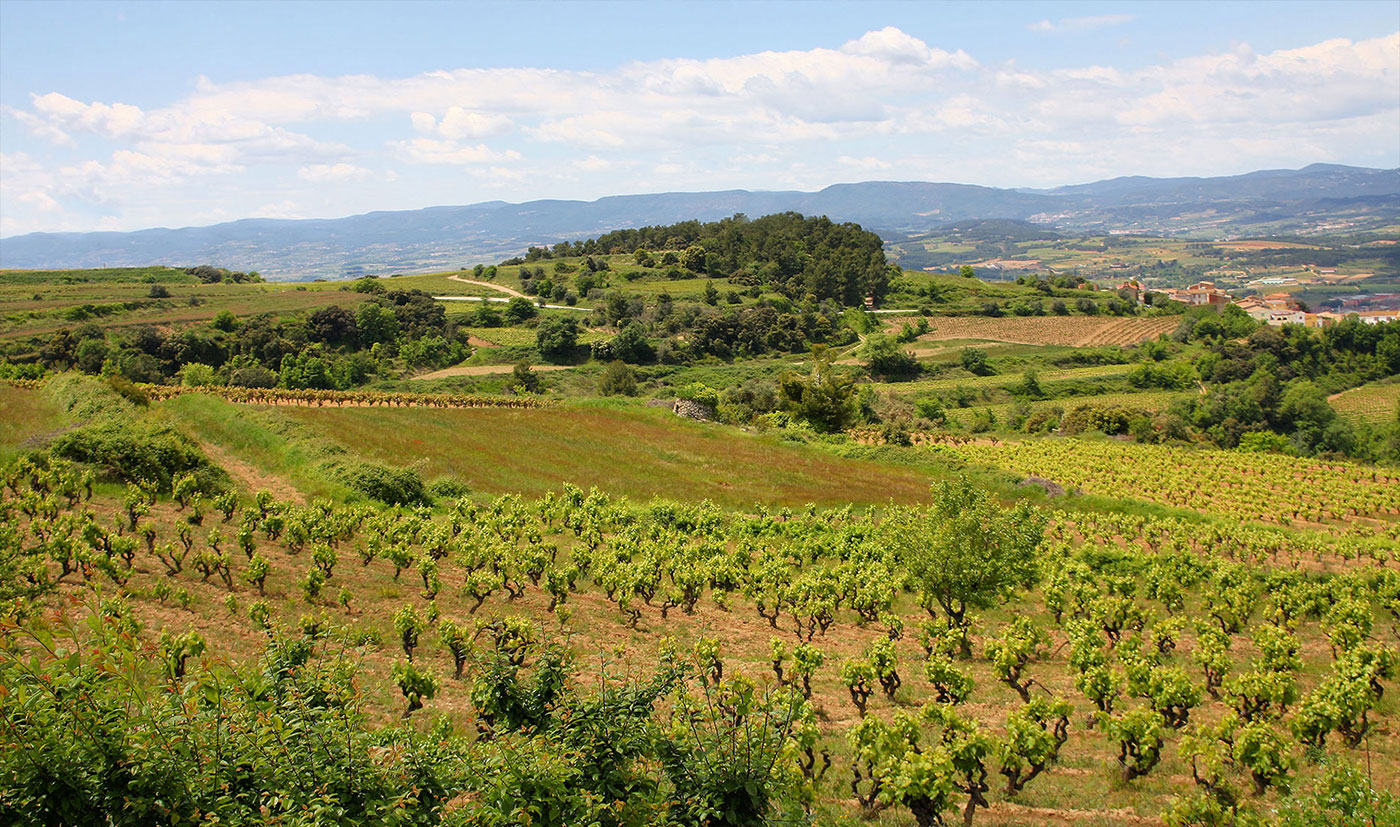
Like the rest of the vineyards on the estate, all the vines are surrounded by natural countryside and Mediterranean forest. The great biodiversity within it provides natural protection against plant diseases, favoring the natural, organic cultivation of healthy, resistant vines.
Les Flandes vineyards were planted between 1940 and 1960. Their production is approximately 4,000kg/Ha (less than 1.5kg per vine).
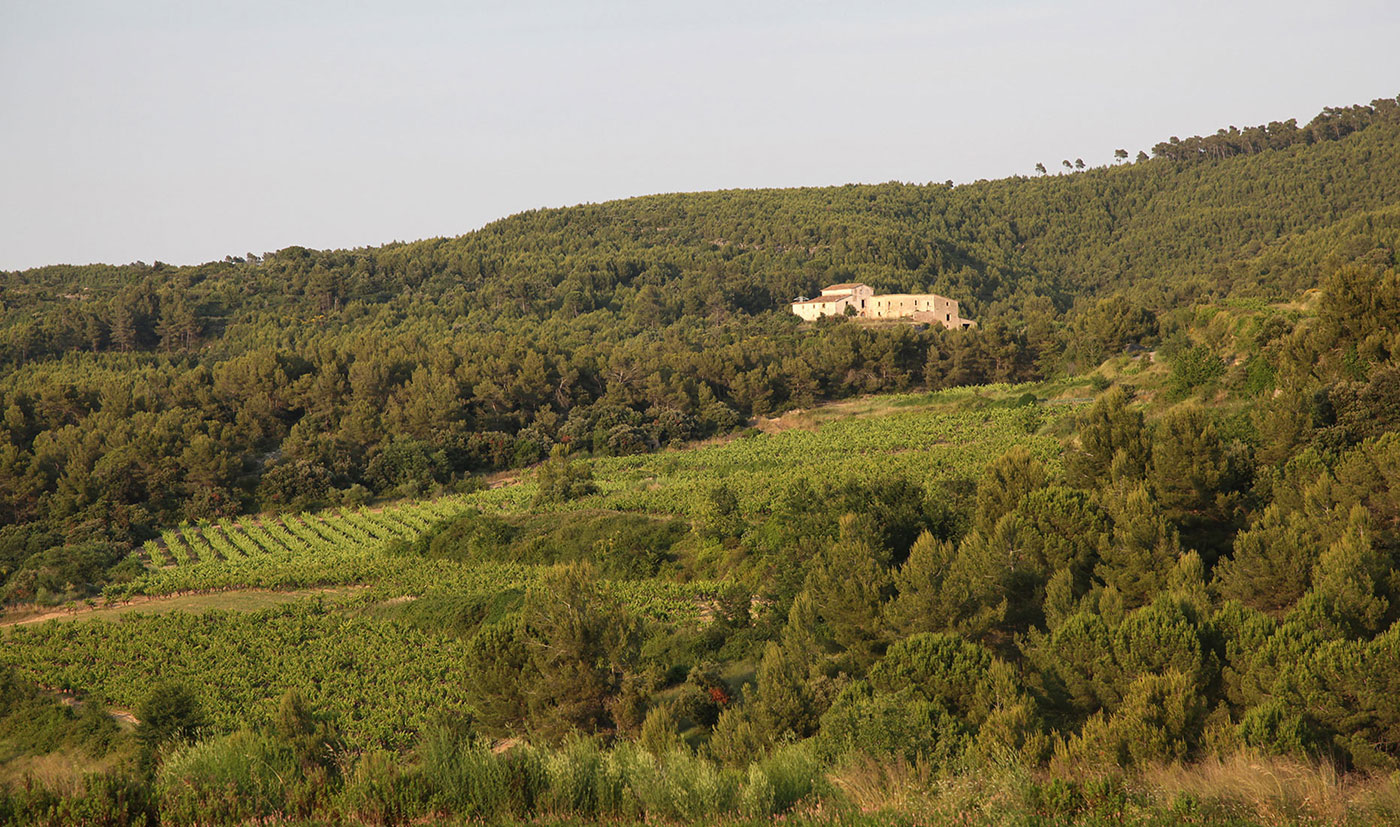
Viña del Ticu (planted in 1935): Montònega grape. This grape is the phenolic adaptation of the Parellada grape to mountainous terrain. It is the most delicate grape and requires careful green-pruning and canopy management. At Les Flandes, due to the particular conditions encountered there, we are able to obtain exceptionally fine wines with great aging potential.
Viña del Pere de can Ros (Xarel·lo planted in 1934 – Macabeu planted in 1956):Xarel·lo grape. This is the vineyard with the lowest production. The grapes have high levels of sugar and acidity. It provides wines with mineral profiles and a unique salinity. It is the backbone of the blend.
Viña de l’Isidoro (planted in 1981): Macabeu grape. Subtle and elegant aromas, a long-lingering balance on the palate and ability for very steady aging. It is responsible for the wide array of aromatic nuances in the Original 1887 sparkling wine.
